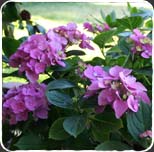The Sago Palm tree can be a beautiful addition to your home. Their dark olive green leaves and lively shape is relatively easy tree to grow and maintain as long as you prepare a proper space.
This is a slow growing and hardy plant that has been known to live in temperatures of 20° F and below. It can tolerate some neglect but will strive with attention.
The trunk has a diameter between 1″ and 12″ depending on the age of the tree. A Sago is a slow growing plant and over time may develop off shoots.
How To Care For Your Sago Palm Tree
Before planting a Sago Palm tree be sure to choose a location where your tree will receive good sun. Growing these plants in the shade will generally result in weak lanky leaves. Ideal soil conditions will be well draining and sandy. Be sure that there is ample room for roots to grow. If you decide to keep your palm in a pot make sure that the pot is at least 16 inches deep or more.
Leaves on a Sago Palm
When new leaves emerge on a Sago Palm they do so all at once and in a circular pattern. The process of growing the new feather like leaves is referred to as “break.” The leaves are tender until they harden, which will be several weeks later. During this process, do not repot or relocate your plant. If your tree is near a window turn the pot each day to ensure that all the leaves receive proper sunlight.
Pruning Your Palm Tree
From time to time your palm tree may end up with yellow fronds. If this happens your palm is most likely suffering from a nutrient deficiency. To revive your tree you can give your palm a bost of fertilizer such a palm food. To ensure your palm tree stays healthy, fertilize your plant every sex weeks during the growing season.
If you decide to trim your Sago Palm tree do so with extreme caution. Yellow leaves should be left on your palm until they become brown. The reason for this is that a palm tree will continue to take nutrients from dying leaves. Removing these leaves could make your plant susceptible to infections. This also goes for any green fronds (palm leaves/palm branch).
If you do decide to prune a your palm tree make sure you cut the palm branch as close to the trunk as possible.
History Behind the Sego Palm
The Sego Palm is an old species that has been around for millions of years. Interestingly, the Sago Palm is not a palm tree at all. It is actually classified as a Cycads, or what others would refer to as “living fossils.” Various species of this plant are found all over the world.
Contacting a Landscape Company
If you are in need of a landscape company let us lend a helping hand. To get started please fill out our contact form and we will get back to you as soon as possible.
Sago Palm Pictures









